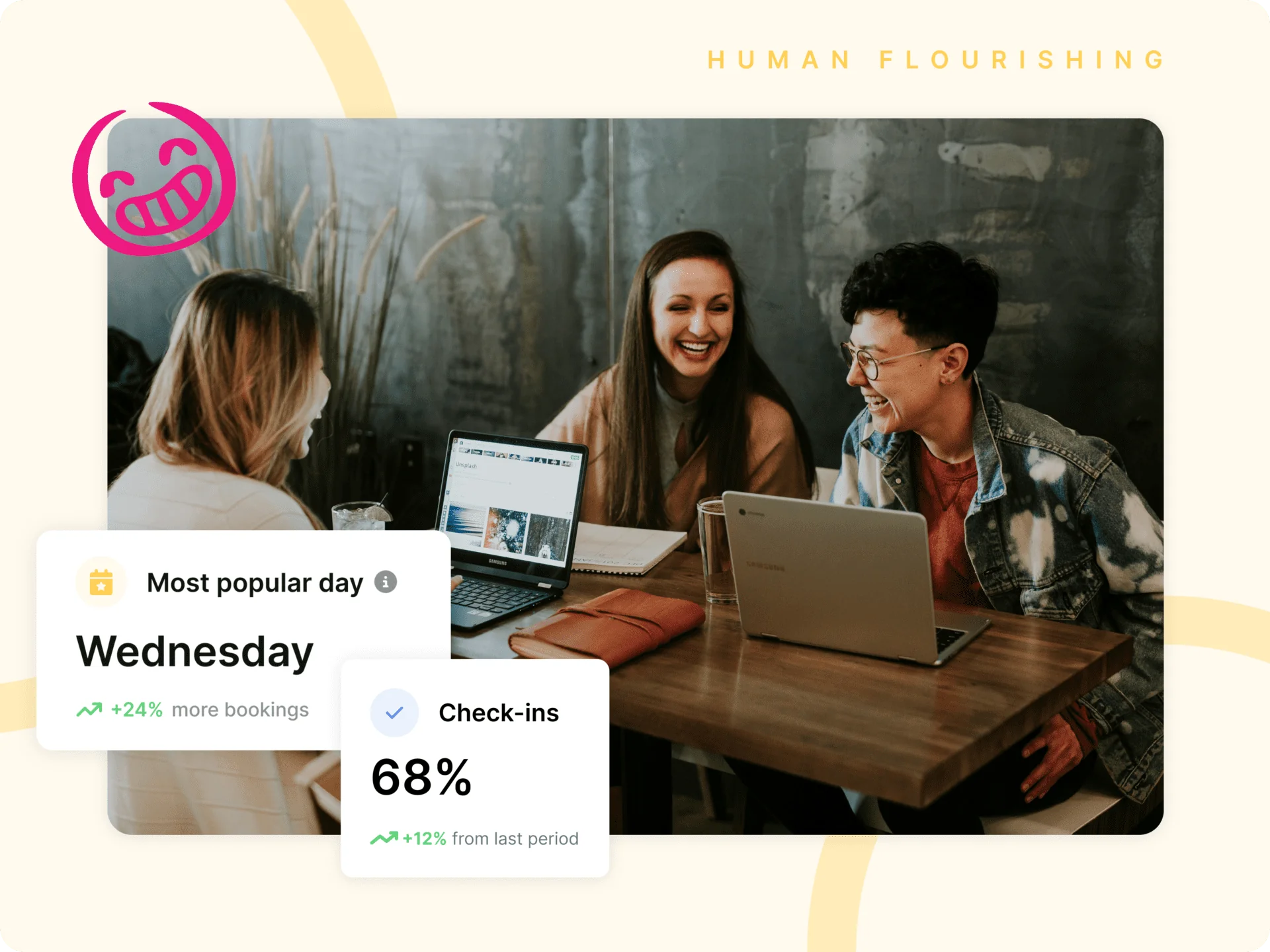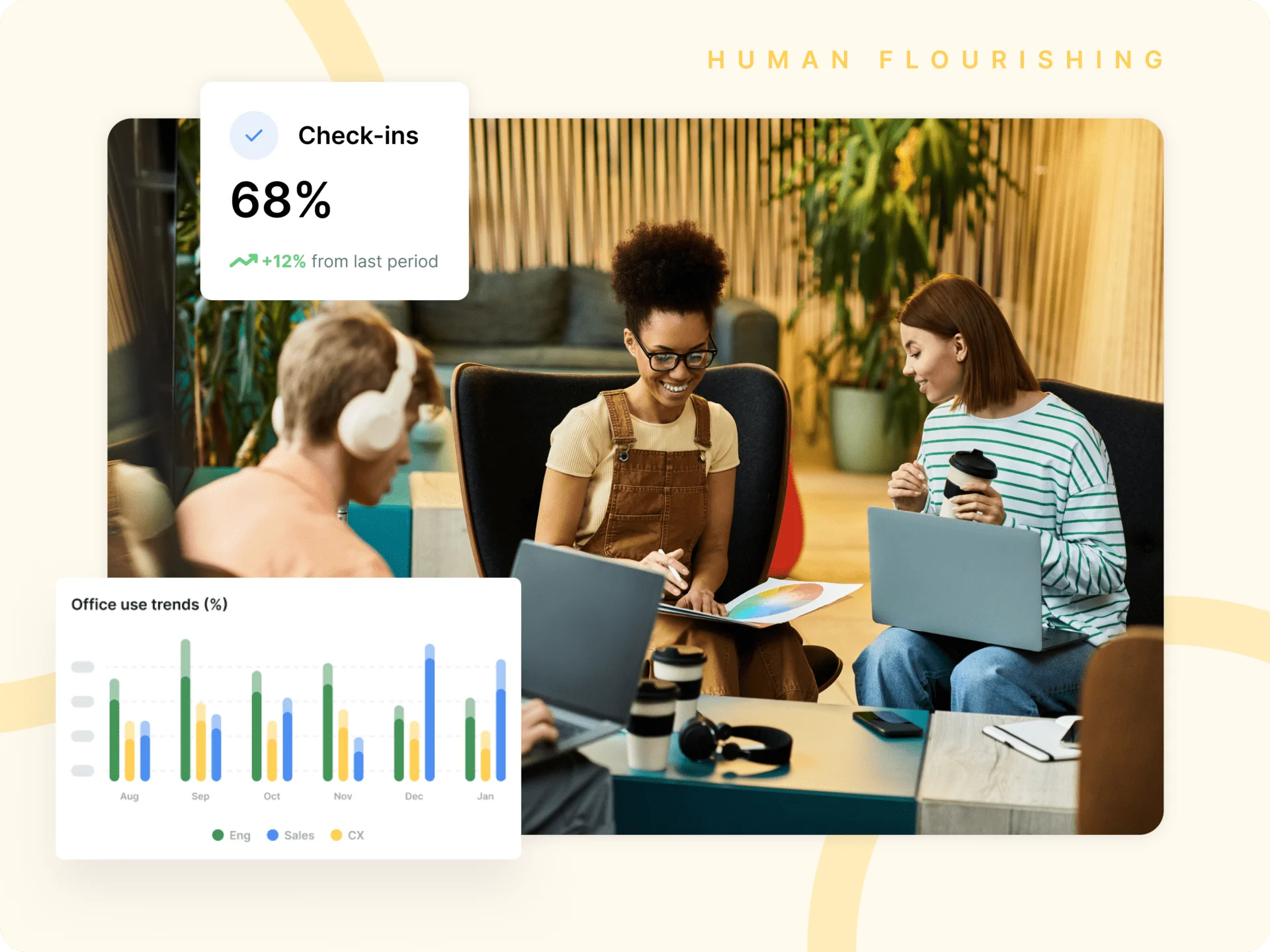In today’s competitive landscape, attracting, retaining, and unlocking top talent has become a top priority for organizations. With the emergence of hybrid work reshaping the very fabric of organizational dynamics, it’s more important than ever to create a generative company culture that enables people to do their best work in this new environment. But how do you get started?
What Do We Mean By Culture?
Culture will absolutely make or break an organization in the form of profitability, productivity, engagement, agility, collaboration, innovation, customer satisfaction, burnout, turnover, and healthcare costs. With data showing organizations that focus on their culture see significant increases in revenue growth (4.1x), stock price growth (827%), net income (756%), sales per employee (13%), and ROI (15x), the business case is compelling to say the least.
While some mistakenly believe company culture is “Taco Tuesdays” or foosball tables, on the contrary, culture doesn’t require being co-located. Culture is the lifestyle of the organization; it governs how people mingle, hustle, and behave – whether they’re in the office, at home, or sending emails from the subway. I would argue that you can actually build a stronger, more inclusive, and effective company culture for distributed teams because it forces you to be intentional, embedding it into everything you do, rather than just letting it develop organically based on the lowest common denominator that shows up in the office that day.
Key Strategies to Create Culture
Here are a few strategies for creating a company culture that enables your people and the business to thrive in a flexible environment:
1. Purposeful Gatherings
As organizations embrace hybrid work and flexible arrangements, the purpose of the office has shifted from the central hub for work activities to a place where teams come together to solve problems, collaborate, and build relationships that transcend virtual boundaries.
- Make the office a high-profile destination: Facilitate meaningful interactions, experiential events, and access to leaders and high-performers.
- Make it count: Bring people together for a specific, focused goal, such as a project kick-off, brainstorming session, or team-building activity.
- Intentionally bring people together for connection: Annie Dean and the team at Atlassian have conducted a ton of research and experiments on this topic and developed a playbook called 1000 Days of Remote Work. In it, the data show zero correlation between people physically being in the office and team connection. They did find, however, that intentionally bringing teams together around 3 times a year to intentionally build connection leads to an average 27% increase in feelings of connection, and this boost lasts 4 to 5 months.
2. Create Belonging
Alright, let’s spill the tea on connection and belonging. Forget about just plopping people in the same office and expecting magic to happen because the data doesn’t support it. Even pre-pandemic, Harvard Business Review found, a whopping 65% of folks grinding away in offices full-time felt like they were stranded on a deserted island when it came to connection. But fear not, here are some fab ways to whip up a sense of connection and belonging as part of your company culture:
- Digital Platforms: Leverage digital platforms that offer peer mentoring and manager coaching to aid in building team connections and trust.
- Communities: Create communities such as employee resource groups (ERGs) and topical Slack channels to create a sense of belonging, ownership, and purpose.
- Shared experiences, challenges, and purpose:
- Create shared experiences by hosting virtual guest speakers and musical artists, or have the team listen to a podcast, read a book, or try a recipe, and then discuss it together.
- Build interdependence, meaning, and empathy across teams by connecting the dots for them so they can see how their role/tasks impact others across the organization and broader ecosystem. One of my clients did this by rotating people from customer success and sales teams every three or six months to shed light on how the upfront promises the sales made to customers impacted customer success downstream.
3. Upskill Leaders
Stepping into the realm of flexible work environments demands a fresh perspective and some revamped habits. But fear not, because the very skills needed to steer distributed teams are the ones that make managers rock stars at handling Millennials and Gen Zers more broadly. Here are a few boss-level strategies to nail leadership in flexible work settings:
- Embrace Digital Fluency and Asynchronous Tools: Mastering collaboration, communication, and project management tools is crucial; consider a Millennial or Gen Z reverse mentor for rapid skill development and better organizational awareness. They may even help you with your TikTok skills. 😉
- Clarity and Transparency: Communicate clear goals, deadlines, and performance expectations to team members. Team-level agreements are a great way to start.
- Trust, Autonomy, and Accountability: Give teams the flexibility to manage their time effectively. Leaders who empower their employees with autonomy and accountability see a virtuous cycle of trust, performance, and ownership.
4. Ensure Development Remains a Priority
While some leaders believe it’s more difficult to develop employees remotely, in reality, flexible work can democratize and expand developmental opportunities. Here are some effective strategies to develop employees when working distributed:
- Virtual Apprenticeship: Encourage senior employees to copy junior staff on emails and add them to Slack channels, calls, and Zoom meetings, which provide them with opportunities to observe and learn.
- Learning in the Flow of Work: Real-time coaching and feedback from managers and peers is a highly productive and cost-effective approach that promotes immediate knowledge application.
- Internal marketplaces: Mastercard has taken a distributed-first, people-centric approach to talent development with the launch of its internal talent marketplace powered by Gloat. By redeploying people where their skills were needed internally, Mastercard avoided laying off any employees during the pandemic and saved them from outsourcing projects to contractors. With the platform’s ability to connect employees across geographies and business units, it also fosters collaboration while democratizing access and opportunities for developing their careers within the organization.
5. Ensure Equity
Equitable experiences for all employees, regardless of location is crucial. A gap between the experience of on-site and remote workers can lead to feelings of inequality and resentment.
To avoid this, companies can analyze promotion trends to identify any favoritism toward employees who spend more time in person with managers and supervisors. Additionally, every policy, technology platform, and meeting practice should be assessed through the lens of on-site, hybrid, and remote employees to ensure a seamless and equitable experience for everyone.
6. Design the Work Around Outcomes and Impact
Organizations should intentionally design their work environments around the desired outcomes and value they seek to create. To optimize team results, leaders need to ask themselves, “What does the work actually require?” They can start by establishing clear objectives, setting expectations for the work, and communicating the reasoning behind them.
To implement this in your organization, set organization-wide objectives and key results (OKRs). Let each team decide how they want to meet those goals and enable team members to do the work when and where they choose. Rather than track hours logged, track performance outcomes and impact.
7. Balance Flexibility and Structure
Top talent seeks a balance between flexibility and structure that allows them to do their best work while accommodating their individual needs and preferences. One of the top complaints from employees returning to offices is that they made the commute just to spend their day on Zoom calls with people in other locations. There are plenty of new software platforms and apps that eliminate the uncertainty of who will be in the office and how to access them, making it easier to coordinate with colleagues and maximize time together.
The folks at Kadence have recognized this shift and are pioneering solutions that help organizations strike the delicate balance between flexibility and structure. Colleagues can align their plans and connect with internal communities and events, creating new opportunities for hybrid teams to schedule real-life interactions. Seamless scheduling software enables employees to see who will be in the office, thus making it easy to make plans and coordinate effectively.
Final Thoughts
As your organization navigates our new normal, embracing flexibility and unprecedented change, there’s one crucial element you can’t afford to overlook: the heartbeat of your organization must be strong. Cultivating a company culture that enables your people to thrive will unleash potential, innovation, and resilience in the face of uncertainty.
With over 15 years of experience as a management consultant, I/O psychologist, and executive coach, Tonille is the founder of EXT – Experience and Transformation, a boutique consulting firm that helps leaders and organizations thrive in the new world of work. She specializes in change management, digital transformation, employee engagement & retention, culture, behavior change, strategic communications, business transformation, hybrid work, AI adoption, employee experience, leadership development, and organizational effectiveness.
Her new book, The Flourishing Effect: Unlocking Employee Thriving as Your Competitive Edge, provides a playbook for leaders and change-makers to create the conditions that engage their people and unlock high performance in this new world.




